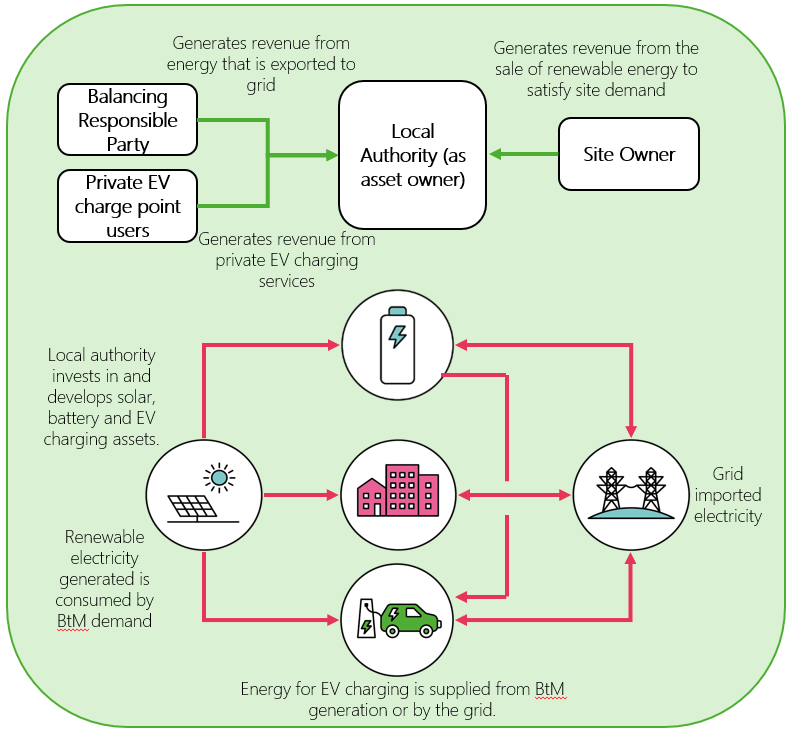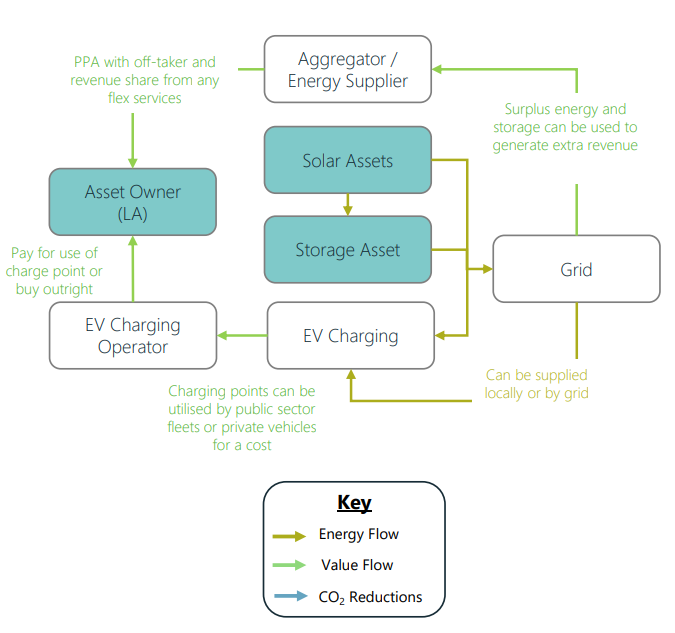The solar carport model can be operationalised in two ways. In its simplest form, solar canopies can be installed over public car parking spaces to offset grid imported electricity at a nearby site
The solar carport model can be operationalised in two ways. In its simplest form, solar canopies can be installed over public car parking spaces to offset grid imported electricity at a nearby site. In a more complex system, EV charging points and battery storage can be integrated with solar to provide EV charging and other services. In this report, our research focuses on the latter.
|
This model can be enacted by local authorities as follows:
This will require an additional commercial arrangement. |
 |
 |
|
|
This model can be operationalised using two approaches:
|
|
Key BenefitsFinancial and CO2
Other Benefits
|
Risks and Considerations
|
Most Suitable for
- Technology – solar, potentially supported by EV charging and storage
- Urban areas where available sites / roof space for solar is more limited
- Public car parking, especially multistorey car parking where top level can be used for installation
- Public sector sites where parking is available, and they are looking to electrify fleets
- Partnerships with other government departments (e.g., Transport and Healthcare) where large public car parking is situated
Contracts required
- Delivery contractor – will need a multidiscipline installer who can support on the design and installation of the solution
- Export connection – any excess electricity will need an export agreement in place with potential impacts on existing grid connection
- Aggregator – if looking to earn revenue from flexibility services will need an energy partner or aggregator
- Charge point operator – to maintain, operate and bill for an EV charging on site
Contractual Considerations
- Need to consider how EV users will be charged and how revenue will be collected from the charge point operator – high utilisation of EV charging is crucial to business case.
- Higher complexity for delivery contractor due to integrating multiple technologies – may require single specialist or a main contractor with the ability to sub-contract
- More data would be required on availability of flexibility to enter into a contract with aggregator


